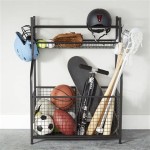How to Keep Storage Food Fresh: A Comprehensive Guide
In an era where food security is paramount, having a stockpile of storage food is essential. However, preserving the freshness and quality of these provisions over extended periods can be a daunting task. Understanding the proper storage techniques is crucial to ensure your stored food remains safe and nutritious for consumption. In this comprehensive guide, we will delve into the key strategies for keeping storage food fresh and maintaining its longevity. ### 1. Choose the Right Storage Containers: Selecting appropriate storage containers is fundamental to maintaining the integrity of your stored food. Airtight containers are essential for keeping moisture and pests away. Glass or heavy-duty plastic containers with tight-fitting lids are excellent options. Avoid using thin plastic bags, as they are prone to tearing and can allow contaminants to enter. ### 2. Oxygen Absorbers and Desiccants: Incorporating oxygen absorbers and desiccants into your storage containers can significantly extend the shelf life of your food. Oxygen absorbers remove oxygen from the container, creating an environment that inhibits the growth of aerobic bacteria, mold, and insects. Desiccants absorb moisture, preventing the food from becoming damp and promoting spoilage. Place these packets inside the containers before sealing them tightly. ### 3. Temperature Control: Temperature is a critical factor in preserving the freshness of storage food. Ideally, storage areas should be cool and dry, with temperatures maintained between 50°F and 70°F (10°C and 21°C). Avoid storing food in areas prone to extreme heat or cold, such as attics, basements, or garages. If possible, consider investing in a temperature-controlled storage unit for optimal preservation. ### 4. FIFO (First In, First Out) Principle: Implementing the FIFO (First In, First Out) principle is crucial for effective inventory management. Always use the oldest food items first to prevent them from expiring and becoming inedible. Regularly inspect your storage area and rotate your food items to ensure the oldest ones are consumed promptly. ### 5. Proper Packaging: Packaging your food items correctly is essential for maintaining their freshness. Original packaging often provides the best protection, so whenever possible, store food in its original containers. If you need to repackage food, use airtight containers or heavy-duty plastic bags and remove as much air as possible before sealing them tightly. ### 6. Monitor Regularly: Regularly inspect your stored food for signs of spoilage, such as discoloration, mold, or an off odor. If you notice any abnormalities, discard the affected item immediately to prevent contamination of other food items. It's also a good practice to create a detailed inventory of your stored food, making it easier to track expiration dates and identify items that need to be used sooner. ### 7. Seal and Label Containers: Properly sealing and labeling your food containers is essential for maintaining freshness and organization. Use airtight lids or seals to ensure no moisture or pests can enter the container. Label each container with the contents, date of packaging, and expiration date. This information will help you track the age of your food and prioritize consumption. ### 8. Avoid Direct Sunlight: Direct sunlight can degrade the quality of your stored food, causing discoloration, loss of nutrients, and accelerated spoilage. Store your food in areas that are protected from direct sunlight, such as pantries, closets, or storage rooms. If you must store food in a windowed area, consider using opaque containers or curtains to block the light. ### 9. Vacuum Sealing: Vacuum sealing is an effective method for preserving the freshness of storage food. Vacuum sealers remove air from the packaging, creating an oxygen-free environment that inhibits the growth of spoilage-causing microorganisms. Vacuum-sealed food can last significantly longer than food stored in regular containers. ### 10. Use Preservatives Wisely: Certain preservatives can help extend the shelf life of storage food. However, it's important to use these additives judiciously and according to the manufacturer's instructions. Some common preservatives include salt, sugar, vinegar, and citric acid. Excessive use of preservatives can alter the taste and nutritional value of the food. ### Conclusion: By following these comprehensive storage techniques, you can ensure that your storage food remains fresh, nutritious, and safe for consumption for extended periods. Remember, proper food storage practices not only preserve the quality of your provisions but also contribute to food security and minimize waste. By implementing these strategies, you can enjoy peace of mind knowing that your stored food is ready to sustain you and your loved ones in times of need.
36 Easy Food Storage Tips That Will Save You A Fortune
Keep Fruits And Vegetables Fresh Stopwaste Home Work School

How To Keep Food Fresh For Longer 7 Expert Tips Hum Nutrition Blog

24 Food Storage S That Preserve Freshness
Organizing A Refrigerator 10 Hygienic Ways To Keep Food Fresh For Longer

This Produce Saver Can Help Keep Your Food Fresh Today

21 Food Storage Tips To Keep Fresh In The Fridge For Longer

Keep Food Fresh Secure Airtight Storage Container Temu

Zwilling Fresh Save Starter Sets Airtight Food Storage Container Target

Cheers Us Produce Saver Storage Containers Fresh Vegetable Fruit Keep Vegetables Easy To Clean Draining Crisper With Strainers Com
Related Posts








